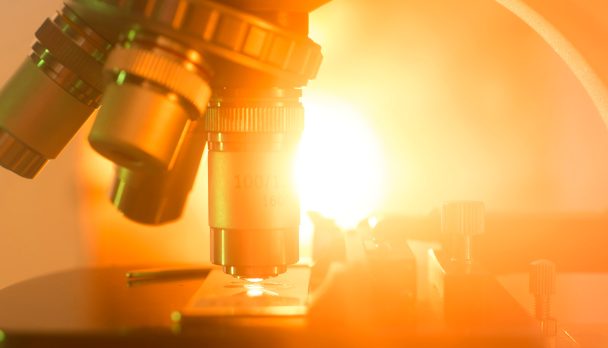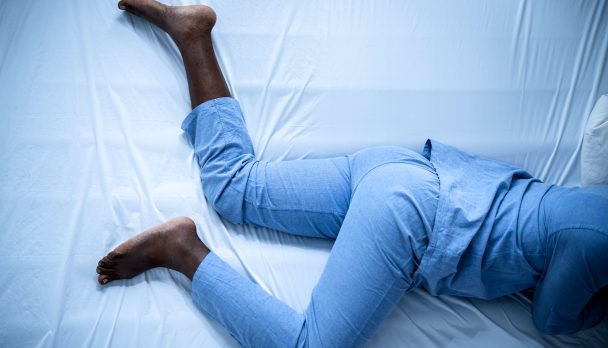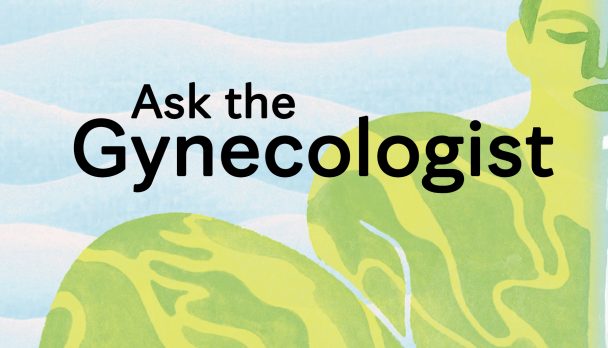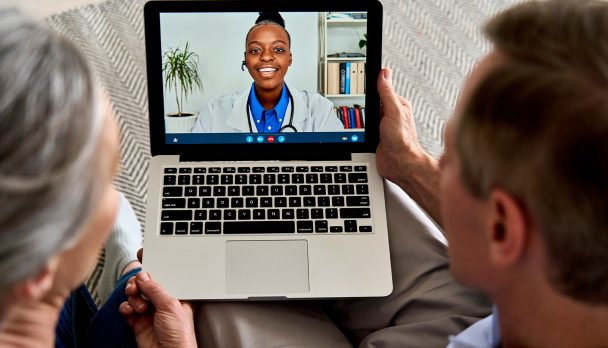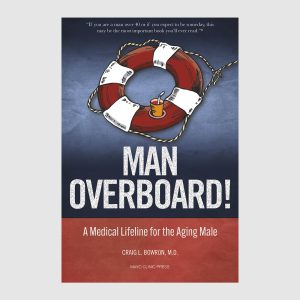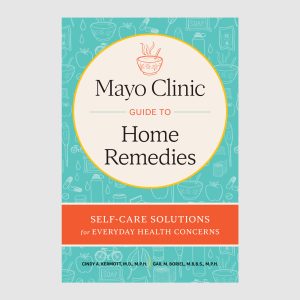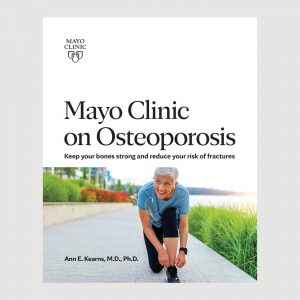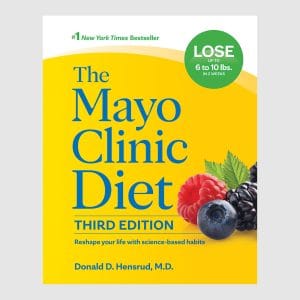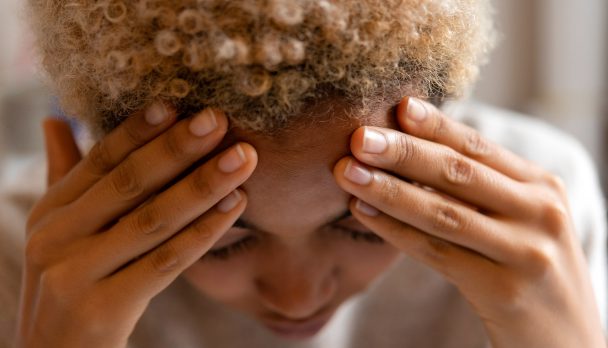
The Nocebo Effect by Michael H. Bernstein, Charlotte Blease, Cosima Locher, and Walter A. Brown details the investigation into the nocebo effect, the placebo effect’s evil twin. The authors explain the truths behind “the nocebo effect” and its significance in the modern world, while also discussing previous historical applications.
The Nocebo Effect In Our Contemporary Public Health Landscape
In March 2020, the world closed its doors. One country after another instituted lockdown orders to help curb the spread of the COVID-19 virus. At the time of this writing, worldwide there have been more than 686 million confirmed coronavirus cases and more than 6.8 million COVID-19 deaths. Pharmaceutical companies worked tirelessly to develop vaccines, which were ultimately created in record time.
A staggering 12.7 billion doses of the COVID vaccine have been administered around the world, with nearly 613 million doses in the United States alone. Undoubtedly, the vaccine has saved countless lives. While we should appreciate these innovations of modern-day medical science, the vaccine has not been universally accepted, and this may be partially attributed to the nocebo effect.
A substantial proportion of the population is wary of the vaccine, and 20 percent of Americans have not received any vaccination, according to the New York Times COVID tracker. Concern over adverse effects is fueling resistance. And vaccines do have some specific side effects—meaning symptoms that occur as a direct result of the vaccine ingredients.
Side effects of the COVID vaccine are widely discussed in news outlets. A CNN headline read, “Here’s Why That Second Coronavirus Shot Can Be Such a Doozy.” A CBS News article, titled “Should You Plan a Sick Day in Case of COVID-19 Vaccine Side Effects?” suggests that people plan for one or two days off work after receiving their shot. One Fox News article quotes a CDC expert who said that “people should be prepared to have . . . a low-grade fever.” Countless online discussion boards teem with anecdotes of people feeling sick after getting jabbed.
But lost in this discussion of side effects, and ignored by the CDC, vaccine experts, and the media, is the inconvenient fact that a significant portion of these side effects are not actually caused by the vaccine. Instead, they are the result of our negative expectations, the so-called nocebo effect.
Imagine a world in which side effects of the COVID vaccine were given less attention. How many fewer people would take sick days after getting their shot? How many more people would be willing to get their vaccine in the first place? If your intuition is that we would be a healthier society if we talked less about vaccine side effects, then you understand the power of the nocebo effect.
“Nocebo Effect” is a difficult term to define. It stems from the Latin word nocere, which translates roughly as “to harm.” Some experts view it as a kind of negative placebo effect in which the outcome is undesirable, such as a headache or stomachache, while the placebo effect, such as feeling less pain or depression, is desirable. No surprise, then, that the nocebo effect has been called “the placebo effect’s evil twin.” In our view, the nocebo effect can be summarized as “the occurrence of a harmful event that stems from consciously or subconsciously expecting it.” The core of the nocebo effect is that adverse health effects occur as a result of negative expectations. Expectations come up in everyday conversation, like when you tell a friend that you’re stuck in traffic but expect to meet them for dinner in twenty minutes. But it’s also an important technical term that academics use (sometimes interchangeably with expectancy), and it was popularized by Dr. Irving Kirsch at Harvard University. Expectancies can teach us a lot about our behavior and actions. They are critical to our health and well-being. The nocebo effect, then, can be thought of as the scientific term for saying that when you expect to feel sick, you are more likely to feel sick.
You might be thinking, “Well, obviously! I don’t need a book to teach me that.” We’d bet the experience of getting your blood drawn felt a lot worse than stubbing your toe, even though the raw sensation of stubbing your toe caused more pain. But only one of these events invokes an expectation. You might say to yourself before the needle goes in, “I’m about to feel a burning in my right arm. I want it to be done quickly.” And that kind of self-talk makes the experience more uncomfortable, unlike stubbing a toe, which happens without warning and therefore without any kind of expectation. You’d never say, “I’m about to stub my toe, and it’s really going to hurt.”
Again, none of this is news to you, though it might not be an idea you’ve verbalized before. We hope to show you just how important and pervasive the effect is, on both a personal and societal level.
The History of Nocebo Research: Where Did It Come From?
In the 1950s, Dr. Henry Beecher, who served as a physician in World War II, published a series of seminal papers on the placebo effect. Beecher documented instances where he gave wounded soldiers saline—that is, salt water—but told them they were receiving a powerful painkiller. Beecher did not engage in this deception out of cruelty; in fact, it was just the opposite. Dr. Beecher was an anesthesiologist and faced the difficult task of rationing an all-too-limited supply of morphine. What Beecher noticed on the battlefield has sparked seventy years of modern-day science on the placebo effect: soldiers experienced substantial pain relief from the saline.
The field started as just a few papers on the placebo effect, but it has since blossomed into a full-fledged body of theoretical and empirical work. In 2023, scholars gathered for the fourth Society of Interdisciplinary Placebo Studies conference, founded by Dr. Charlotte Blease and colleagues, and devoted to the study of placebo science. Placebo research has been published in top academic journals, but it has also captured the public imagination, with leading popular press articles in nearly all major media outlets.
The topic of nocebo has emerged largely from work on the placebo effect. And while thorough reviews of nocebo are lacking, it is still a critical factor to consider in patient care. So where did the idea of the nocebo effect originate? The answer is more confusing than you might imagine. We can trace the origin of it back to at least the 1700s.
Franz Mesmer was an eighteenth-century German physician who developed an interesting cure for a range of maladies. Mesmer believed that illnesses could be alleviated by using magnets to govern the flow of fluid in people’s bodies. This might seem preposterous, but bear in mind that Mesmer lacked any of our modern-day tools of science and medicine. He lived in an era when leeches, used for bloodletting, were considered therapeutic. Nonetheless, Louis XVI, king of France at the time, was skeptical of Mesmer’s claims. He established a commission to investigate, led by Benjamin Franklin. Franklin and the others did what we would now refer to as placebo-controlled studies to, as the commission put it, “separate the effects of the imagination from those attributed to magnetism.” The commissioners led patients to believe they were being magnetized even though they weren’t. But all the usual magnetism side effects were still present. On one occasion, the commission noted that after a minute a patient began “shivering with chattering of her teeth, twisting of her arms and trembling of the whole body.” It’s no surprise, then, that they ultimately concluded that results attributed to Mesmer’s treatment were due only to “imagination.”
There are two important points to be taken from this story. The first is that Franklin and the other commissioners identified nocebo effects. The side effects experienced by Mesmer’s patients were due to the expectation of having side effects. Magnetism itself did not cause them, because the patients weren’t actually magnetized. The other thing to note here is that treatment effects and side effects go hand in hand. The patient’s shivers and convulsions were side effects of a treatment intended to alleviate suffering. They were viewed as integral, but not as therapeutic in themselves. Nocebo effects are often about side effects, and divorcing the good and bad from treatment is not so easy. If it were, you wouldn’t worry so much about that pill causing fatigue, weight gain, or irritability.
Fast-forward about 150 years, to the mid-1900s. One of the top medical journals in the United States, the Journal of the American Medical Association, published some papers that documented the existence of side effects among patients who received a placebo. Dr. Harold Diehl, a physician who focused on treating the common cold, seems to have been the first to observe that certain people fall ill after taking a placebo. He conducted double-blind vaccine trials to test treatments for the common cold and noticed a small portion of people had negative reactions to a lactose pill or a placebo vaccine. Though these findings were reported in his paper, little attention was paid to them. In the 1950s, Stewart Wolf, a pioneer in studying the placebo effect, reported on an experiment in which hospital inpatients with anxiety were given a real drug or a placebo to help quell their nervousness. In Wolf’s paper, we see for the first time a more thorough discussion of negative placebo reactions. Wolf and his co-author, Ruth Pinsky, wrote: “Minor reactions—nausea, drowsiness, lightheadedness, and palp[it]ation—were often noticed on placebo administration.” They reported that one patient even developed “a diffuse itchy [rash after] 10 days of taking pills. . . . The patient firmly refused to try another batch of pills. Later it was learned that the rash had developed while she was taking placebos.” Yet another patient had severe gastric pain and diarrhea after taking the placebo.
At this point, the story of nocebo returns to World War II anesthesiologist Henry Beecher. In a landmark paper that played a major role in paving the way forward for placebo research, Beecher devoted a section to what he called the “toxic” effects of a placebo. In Beecher’s words, “Not only do placebos produce beneficial results, but . . . they have associated toxic effects.” According to Beecher, there were thirty-five different side effects caused by placebos, such as dry mouth, nausea, and headache.
You might think that it was Beecher, or perhaps Diehl or Wolf, who coined the term “nocebo” to label their observations. However, it was actually Walter Kennedy, who first used the word “nocebo” in 1961, nearly thirty years after Diehl’s first paper. Even at that point, formal research into nocebo languished. According to a database of placebo and nocebo research kept by the Society of Interdisciplinary Placebo Studies, only two articles on nocebo were published in the twenty-five years after Kennedy’s paper. However, parallel to the spike in placebo research over the past couple of decades, nocebo research has also proliferated. Recently, studies have documented the critical role of nocebos in treatment side effects, explored the psychological and social processes that produce nocebo effects, and suggested how they can be minimized.
Psychogenic Illnesses: From the June Bug to Havana Syndrome
The mind’s unfortunate ability to cause suffering is well established, and this phenomenon lies at the heart of the nocebo effect. One such example, known as “The June Bug,” occurred in a textile factory in the United States in the early 1960s. Many employees began to feel dizzy and had an upset stomach. Some people vomited. Rumors of a mysterious bug that was biting employees began to circulate, and eventually sixty-two people who worked at the factory became ill. So what were these mysterious bugs? According to experts, they were nothing—literally. The CDC investigated this outbreak, but no bugs or any other cause of the illnesses could be identified. It instead appears to have been a case of what has often been labeled “mass hysteria,” though it is now called psychogenic illness.
Over the course of history, there have been countless examples of psychogenic illness—sickness caused by belief. Symptoms can range from hysterical laughter to vomiting to seizures. No organic reason for such outbreaks has yet been identified, despite the best attempts of doctors and health professionals. Psychogenic outbreaks trace back as far as the Middle Ages. Aldous Huxley, author of the widely read dystopian novel Brave New World, described one such example from the seventeenth century in a lesser-known work titled The Devils of Loudun. As Huxley documents, Loudun, France, was home to a serious psychogenic outbreak among nuns, perceived at the time to be caused by demonic possession, symptoms of which included laughing fits and convulsions. It can be considered an early example of the nocebo effect.
But would such a mass outbreak occur today? It might be easier to imagine people from the Middle Ages, or even a half century ago, experiencing this type of bizarre illness than it would be to think of such a thing happening in the twenty-first century. During 2016 and 2017, however, twenty-one American diplomats in Cuba experienced a range of bizarre neurological symptoms such as hearing loss and nausea. News of what came to be known as “Havana Syndrome” spread, and eventually more than two hundred U.S. government personnel in diplomatic missions in several countries became ill. This case was more troubling than just a few individuals who got sick with unexplained symptoms. Speculation quickly mounted regarding nefarious acts by our foes abroad. One leading theory was that the Russian government was releasing invisible microwaves that caused people to get sick. This might sound like a fringe conspiracy theory, but it has been discussed in leading news sources ranging from the Washington Post to NPR. In a 2021 meeting, the cause of Havana Syndrome was discussed among the secretary of state, the attorney general, the CIA director, and the FBI director. Would so many high-ranking U.S. officials meet if they believed that Russian interference was off the table as a potential cause?
To be clear, we do not yet know for certain the cause of these neurological conditions. It is even conceivable that the speculation about Russian interference will ultimately prove correct. However, there are plenty of similarities between what happened relatively recently in Cuba and what happened in the past in Loudun, France, and elsewhere. It should be concerning to scientists and the public alike that the possibility of a psychogenic reaction is not being taken seriously. As discussed by New York Times reporter Serge Schmemann, the person who was hired to oversee the investigation into Havana Syndrome was pushed out of this role because she refused to take psychogenic illness off the menu of potential causes.
Germs are not the only way that illnesses can spread. Psychological outbreaks are very real, and Havana Syndrome fits the same pattern that has been observed so often before. As Mark Twain is alleged to have said, “History does not repeat itself, but it rhymes.” Imagine if speculation about Russian interference gained more of a foothold. What if then-president Donald Trump had released inflammatory tweets about it? How would Vladimir Putin have responded? Could this have turned into a global incident? The nocebo effect is powerful indeed.
The Nocebo Effect is the result of the collaboration of a litany of brilliant authors. Micheal H. Bernstein is an experimental psychologist who focuses on harnessing the placebo effect to reduce opioid use among pain patients. Charlotte Blease is a philosopher and interdisciplinary health researcher who writes about the ethics of placebo and nocebo effects. Cosima Locher is a psychologist and researcher dedicated to studying honest placebos. Finally, Walter A. Brown is a Clinical Professor Emeritus of Psychiatry and Human Behavior who has studied the placebo effect for the past 40 years.

Relevant reading
Mayo Clinic Diet and Cook Smart, Eat Well Bundle
This revised edition of the #1 New York Times bestselling book offers a simple, time-tested, no-nonsense approach to losing weight and keeping it off. The Mayo Clinic Diet by Donald D. Hensrud, M.D., isn’t a fad diet – it’s an approach that draws on years of research from thousands of individuals seeking…

